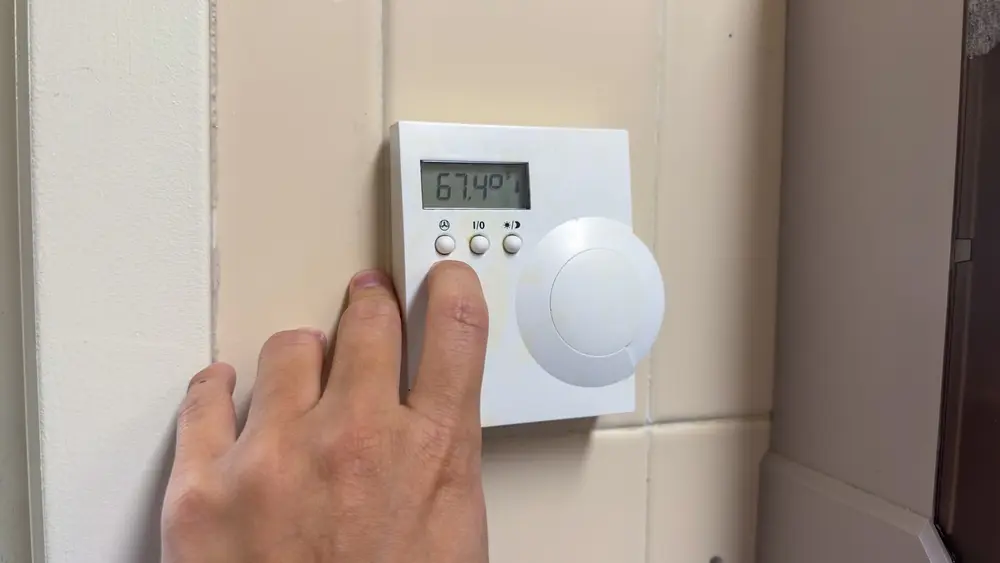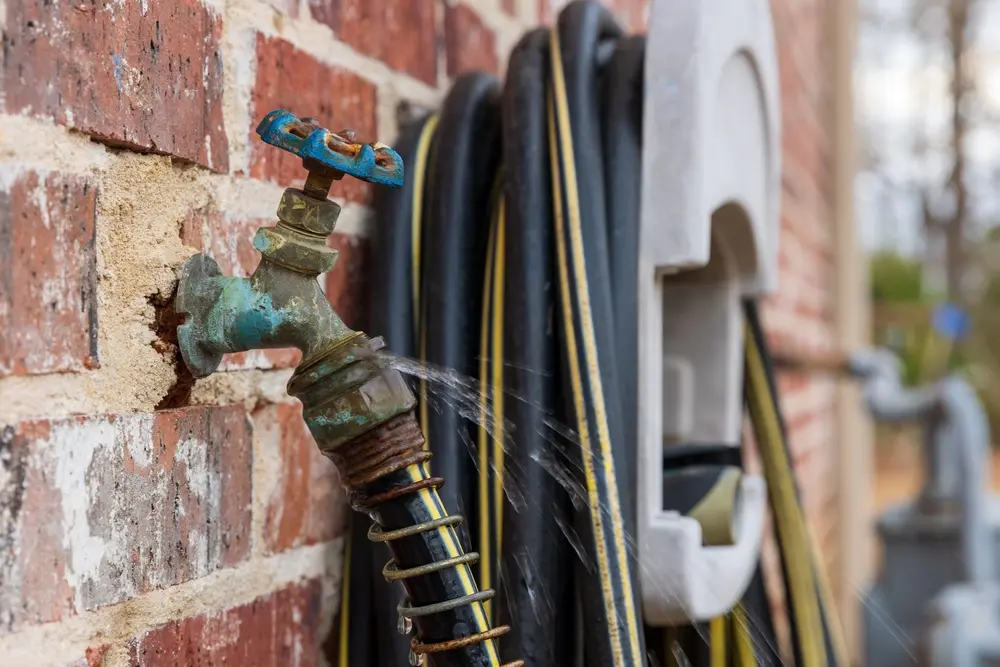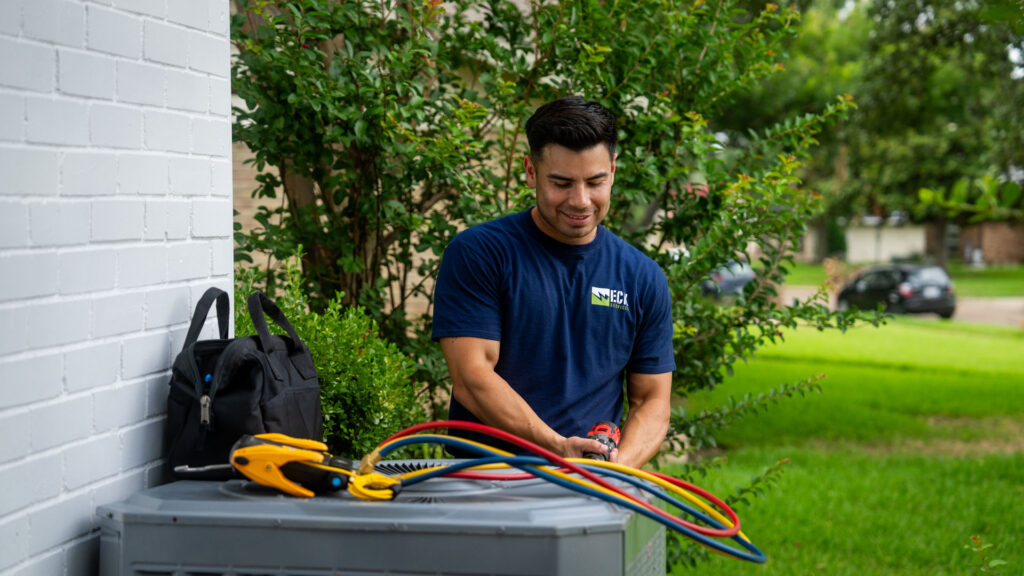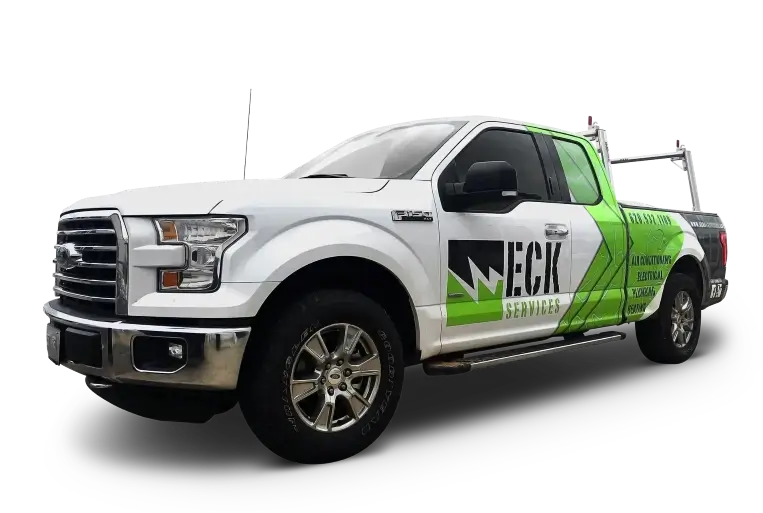Blog
How Do I Know What Size HVAC System My Home Needs?

Whether you’re putting an HVAC system into a new construction or replacing an existing setup, it is critical to get the right size. However, determining the size you need is not just a matter of looking at your budget or even at the size of your house. Take a few minutes to learn about HVAC sizes and the variables that will affect what size unit your home requires.
How Is HVAC Size Measured?
To discuss how to determine the right size HVAC system for your home, it’s important to understand what size means in this context. Both furnaces and air conditioners are measured in terms of BTUs, or British Thermal Units. One BTU is the amount of heat needed to raise the temperature of one pound of water by one degree Fahrenheit.
For furnaces, the BTU rating looks at the amount of heat it can produce. Concerning air conditioners, it’s the amount of heat the refrigerant can transfer over an hour of running.
The other language you may see regarding unit size is tons. Tons are just a simplified way of expressing BTUs. One ton is equal to 12,00 BTUs, so a 100,000-BTU unit is equivalent to 8.3 tons.
Why Is HVAC Sizing So Important?
It seems to make sense that a unit with more capacity would better heat or cool your home. You might think that it would do so more quickly. In turn, this would shorten HVAC cycles, saving on your energy bills.
Unfortunately, this would only be partially true. An HVAC system too large for your needs would heat or cool a portion of your area rather quickly, then shut itself off without quite finishing the job, soon start again and continue going through the same inefficient procedure. Your space would never be evenly comfortable, and your equipment would expend far too much energy failing to achieve its purpose.
In addition to having the right amount of heating or cooling capacity, your system needs to cycle the right amount of air. It takes time to allow the system to circulate the heated or cooled air throughout your home. Shortening the cycle inevitably leaves your home with hot and cold areas due to lack of circulation.
This leads to your system running the shorter cycles more often while it tries to attain your desired temperature. The frequent stopping and starting is hard on your system, leading to excessive wear and more repairs. More frequent cycles also mean using more energy.
A system that’s too small for your home is just as problematic as a system that’s too big. It may cost a little less initially, but you’ll pay for longer cycles that never quite achieve your desired temperature. You’ll also get less service life from your unit.
You’re better served by investing in the right size unit for your home and having that investment last longer and run more efficiently. Here are some of the factors considered by your installation specialist while determining the size system you need.
How Big Is Your Home?
The base for any HVAC calculation is always the size space you’re treating, measured in square feet. The larger the space, the more heating and cooling capacity you’ll require.
One way to determine your square footage is to look at a recent real estate listing for your home. Keep in mind that this may not agree with what your installation technician will calculate.
This happens when you renovate your space, adding or removing service areas. You may also have service areas for your HVAC system that aren't counted as livable space for your real estate listing. These might include your garage, attic or basement.
To get an accurate size for your home, measure your space and calculate the area for each room. For square and rectangle rooms, simply multiply the room’s length by its width. As you go through your home, add the areas of all the rooms. Be sure to include spaces like hallways, closets and pantries. Check areas like your attic, basement and garage to see if they have any vents. If they do, you’ll want to include them in your calculation.
How Is Your Home Constructed?
How your home is constructed will play a significant role in the capacity you need from your HVAC system. If you have high vaulted ceilings in your home, you’ll need a greater capacity. If your home has many windows, that could also increase your capacity requirement.
You’ll also want to consider how well your home is insulated and sealed. A newer home that is well sealed will need less capacity than an older home with numerous leaks.
Since heat rises, the number of floors in your home matters too. You may need slightly less capacity for your furnace to keep your home warm but a slightly bigger air conditioner to keep it cool.
What Is The Exterior Environment Like?
The external environment will also influence your system’s size. The first consideration is the climate zone in which your home is located. Southern Kansas, including Wichita and Kingman, is in climate Zone 3. This tells you the capacity you’ll need, and the recommendation is 40-45 BTUs per square foot. If you have a 1,500 square foot home, that translates into at least 60,000 BTUs.
However, the immediate environment also plays a role. For instance, if you have very little shade on your house, you may not need as big a furnace, but you might need a larger air conditioner.
Lifestyle Considerations
Your family size and your lifestyle will also affect your needs. First, how many occupants are there in your home, including warm-blooded pets? Each one produces heat, so it may alter your overall requirements.
Next, do you like to entertain, or do you have hobbies with specific temperature requirements? For instance, if you like to host hot yoga classes in the middle of the winter, you may need a larger furnace. If you entertain large groups throughout the summer, you may need a larger air conditioner.
System Efficiency Matters
The efficiency of your system is important to consider as well. This tells you how much of the heating capacity is actually usable. If your new 100,000 BTU furnace has an 85% efficiency rating, that means it will only pump 85,000 BTUs into your home.
This is where exploring higher efficiency units starts paying off. The advantage is lower monthly utility bills and a smaller carbon footprint. Some have furnace efficiency ratings as high as 98%; however, these are generally more expensive than similarly sized standard units. You may be able to opt for a smaller unit, reducing your overall costs.
People around Kingman have turned to Eck Services for their heating and cooling needs for more than 15 years. Our team provides both air conditioning and heating installation, replacement, maintenance and repair combined with an extensive range of plumbing and electrical services. To start evaluating what size system your home needs, call today to schedule your consultation with one of our expert HVAC installers.




